by Jessica Kosinski
There are many collectibles designed to sit on shelves and be admired. But then there are the collectibles that also serve practical purposes. For those who collect motorcycle gear, and especially motorcycle jackets, part of the thrill is wearing the gear and showing it off to fellow riders, as well as any other people they encounter in their travels. While motorcycle boots, gloves, and jackets have a shorter history than many antiques, they are no less interesting to collect. So, let’s take a peek at how motorcycle enthusiasts use such gear not just for protection and practicality, but also to express individuality and personality.
It All Started with the Motorcycle
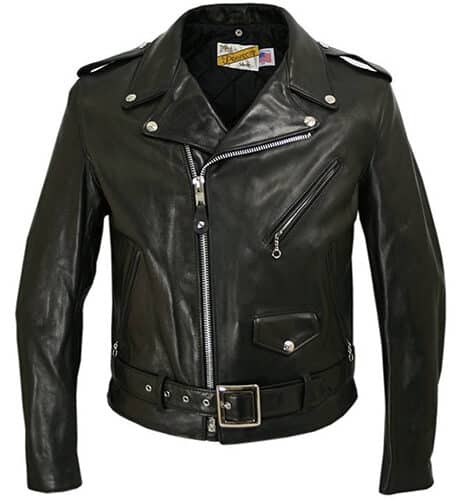
Motorcycle leathers and related motorcycle gear as we know them today did not exist before motorcycles, of course. The earliest “motor-cycles” were essentially bicycles with engines capable of boosting their speeds. An American named Sylvester Howard Roper invented the first steam-powered cycle, known at the time as a velocipede, in 1867.
In 1885 in Germany, Wilhelm Mayback and Gottlieb Daimler invented a combustion engine that could be used for what we now know as motorcycles. The two inventors were assisted by four-stroke internal combustion designer Nicolaus Otto. Daimler later founded what is now Mercedes-Benz. Almost ten years later, the name “motor-cycle” became the brand title for the first bikes produced on the German assembly line of the Hildebrand & Wolfmuller company. That company began producing its “motor-cycles” in 1894. However, the first American cycles of a similar sort were not produced until 1899. That year, Charles H. Metz started producing his own version of the engine-powered bikes on American soil.
How World War I and World War II Influenced Motorcycle Attire
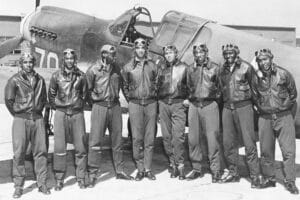
During World War I, motorcycles were first used by military members. They were a means of spreading information between camps quickly without drawing too much attention, such as that garnered by larger vehicles. During that time, tank corp gear was adapted by motorcyclists to provide some protection from the elements, as well as enemies. Duster coats were part of the attire worn by some military motorcyclists. However, the end of the war saw a switch to shorter jackets.
The popularity of motorcycles for military use by American soldiers in both WWI and WWII led to a huge boom in motorcycle riding. The largest boom in motorcycle popularity occurred shortly after WWII. The 1940s was also a time when interest increased in the development of many motorcycle riding clubs.
The Introduction of the Iconic Leather Motorcycle Jacket
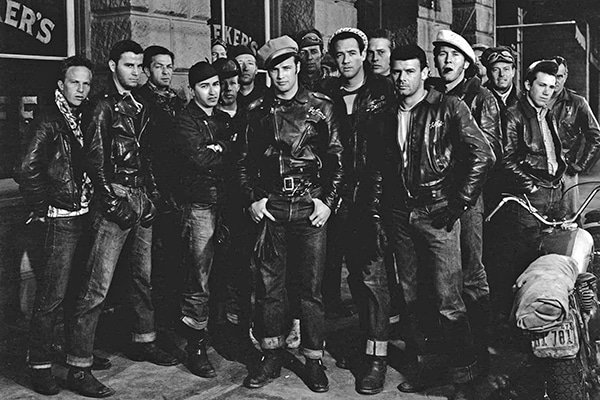
In 1928, Irving Schott of New York City invented what he called the “Perfecto.” It was a special type of leather jacket, which has since become representative of the look we all expect a motorcycle jacket to have today. However, that type of jacket did not garner true popularity among motorcyclists until the release of a Marlon Brando movie called The Wild One in 1954. One-piece racing leathers for motorcycle racers were developed around the time of the release of that movie as well.
The Ornamental Nature and Expressiveness of a Motorcycle Jacket
Early motorcycle jackets were fairly uniform in nature. However, bikers soon began to embellish them with ornamentation of various sorts. Often, that ornamentation had some sort of meaning for the biker. For example, an ex-military member might have military insignia or symbolism of some sort on the jacket he wore. However, around the late 1970s and early 1980s motorcycle jacket patches began to become not only ornamental, but also informational. Since that time, most motorcycle jackets worn by motorcyclists have included patches designating such information as:
• the club they belonged to;
• the territory of a particular biker club;
• the club insignia or logo.
For those reasons, it is typically fairly easy to date a motorcycle jacket as pre-1975 or post-1975 based on its design and augmentations.
Collecting Antique and Vintage Motorcycle Leathers
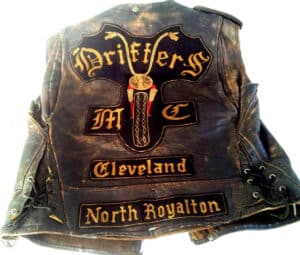
Of course, motorcycle jackets were not the only pieces of motorcycle leathers worn by motorcyclists in the earlier days of the sport. Riders also needed hand protection, which was usually in the form of leather gloves. Additionally, many motorcyclists started converting certain pieces of cowboy gear into motorcycle gear in the 1960s. Leather chaps specifically began to take off as motorcycle wear, as opposed to clothing more suited to a horse corral.
Another piece of equipment “borrowed” from the cowboy was the saddlebag. Handcrafted of heavy, thick leather with metal accents these bags had to be sturdy and steady while attached to the bike to survive those long road trips.
Construction of Motorcycle Gear

Like the leather gear worn and used by the equestrian, motorcycle leathers required the use of a heavy-duty sewing machine but were also hand-stitched. The thickness of the leather would determine the size of the needle used on the piece, and hole punches, mallets, leather knives, an anvil, grommet setter, and crafting equipment for tooling on the leather with beautiful designs.
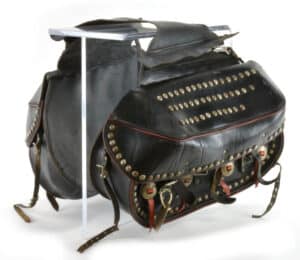
Even today those tools have not changed much from those used out on the range. Industrial cutters and sewing machines certainly make the crafting much easier, but the finishing and decoration are still done mostly by hand to keep the “look.”
If you intend to collect, and especially use, antique and vintage motorcycle leathers today, be aware that riding laws have changed. Many areas require you to wear safety gear of a certain caliber, such as clothing featuring internal armor in case of accidents. However, many pieces of vintage and antique motorcycle riding gear are still legal to wear while riding, as well as fun to display.
Jessica Kosinski has been a freelance writer specializing in writing short articles for 15 years. She is also an avid collector of both antique books and Star Wars memorabilia. Although she is not in the antiques industry professionally, she has learned a lot about antiques over the years by periodically helping out at her mom’s antiques shop in Greenville, NH. She currently balances maintaining the antiques shop’s Facebook page, www.facebook.com/MallofNE, and working on various freelance writing assignments. She can be reached at dementorskiss77@yahoo.com.




Related posts: